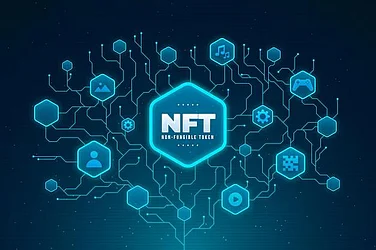Cryptocurrency is built on the shoulders of an enormous but cohesive web of technologies. Working behind each wallet, exchange, or decentralized app is a matrix of tools and protocols working together to get things done correctly, shift money safely, and provide steady innovation. Of all these enabler building blocks, APIs (Application Programming Interfaces), SDKs (Software Development Kits), and developer tools are leading the way in empowering systems to communicate with one another effortlessly, ease development, and introduce blockchain into the mainstream. Although the words themselves are technical-sounding, they are what close the blockchain's raw power and consumable applications that hundreds of millions of users use on a daily basis.
APIs: The Crypto Systems' Connective Tissue
API in cryptocurrency infrastructure simply refers to an intermediary for software. An API enables applications to talk to blockchain networks, request data, or initiate certain activities without the direct intervention of developers into the inner layers of the blockchain. APIs fundamentally conceal the complexity of blockchain protocol with developers having an efficient and structured way of accessing blockchain functionality within their applications.
Within the crypto ecosystem, APIs might enable everything from fetching market data, calling token transfer, handling user authentication, or fetching blockchain analytics. APIs make data possible for traveling consistently and securely across services to help create interoperable ecosystems where apps, platforms, and networks will communicate with one another in harmony.
SDKs: Facilitating Fast and Secure Development
Whereas APIs define the channels of communication, SDKs are a developer's kit used to create blockchain applications. An SDK is a pre-coded set of libraries, documentation, and software development tools that assist developers in incorporating blockchain into their application more efficiently.
With the organization of essential operations in a plug-and-play manner, SDKs minimize the time spent by developers working from scratch or going through the entire blockchain protocol. SDKs enable the teams to concentrate on application reasoning, user interfaces, and innovation and not waste time on low-level calls to the blockchain. This process not only accelerates development cycles but also guarantees that output applications are developed by means of best practices and repeatable processes.
Developer Tools: The Innovation Platform
Beyond and above APIs and SDKs, the general category of developer tools would include all of the stuff that a blockchain developer would employ in order to construct, test, and deploy an application. These would range from blockchain explorers to track transactions, command-line tools to talk to the network, code testing environments, and debugging scaffolding.
It is developer tools which ensure that crypto applications are secure and quality-oriented. They offer environments where blockchain functionality can be tried out, smart contracts pre-checked prior to shipment, and network performance measured. Without developer tools, the creation of secure and reliable crypto applications would be a slow and error-prone process, and hence they are an absolute necessity in creating blockchain ecosystems.
Interdependence in Crypto Infrastructure
APIs, SDKs, and developer tools are not isolated entities. They're all parts of the broader crypto infrastructure's interwoven ecosystem. APIs can utilize SDKs in an attempt to have better structured access to blockchain capabilities, and SDKs can be developed from root APIs. Developer tools combine APIs and SDKs into a single process that constructs and communicates with blockchain applications.
It is this dependency on each other that makes crypto innovation at scale possible. Bitcoin developers are able to get information via APIs, bring functionality in via SDKs, and utilize specialist software to complete, test, and secure apps. All of them are participants in an organized development environment for rapid exploration and reliable deployment.
The Role in Increasing Blockchain Adoption
Cryptographic complexity of blockchain technology can be an enormous entry point for new programmers. APIs, SDKs, and programmer toolsets reduce this barrier by providing users well-documented, clear, and open means to interact with blockchain networks. Not only does that facilitate easier access to the world of cryptocurrency for more programmers, but it also provides us with additional applications to be utilized for niche and mass applications.
By streamlining blockchain adoption, the components enable companies, researchers, and startups to utilize decentralized technology without necessarily being blockchain experts. This, in turn, fosters increased use of crypto infrastructure and supports long-term digital economy development.
Conclusion
In the rapidly changing blockchain and cryptocurrency world, APIs, SDKs, and developer tools cannot be emphasized enough.
They are the underlying forces propelling the applications, exchanges, wallets, and decentralized services constituting the new crypto environment. By facilitating secure communication, simplifying development, and delivering high-fidelity testing environments, these solutions enable blockchain innovation to be viable, scalable, and sustainable. And as the market itself keeps growing and maturing, so too will theirs, becoming a vital core of the next wave of decentralized technology.

























